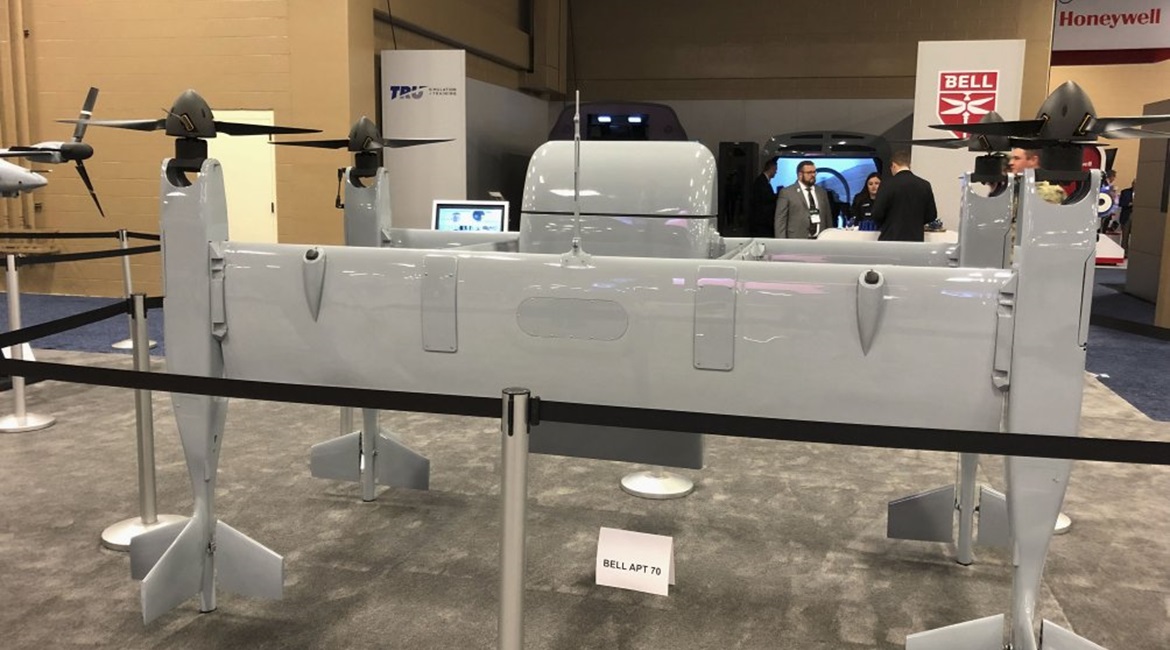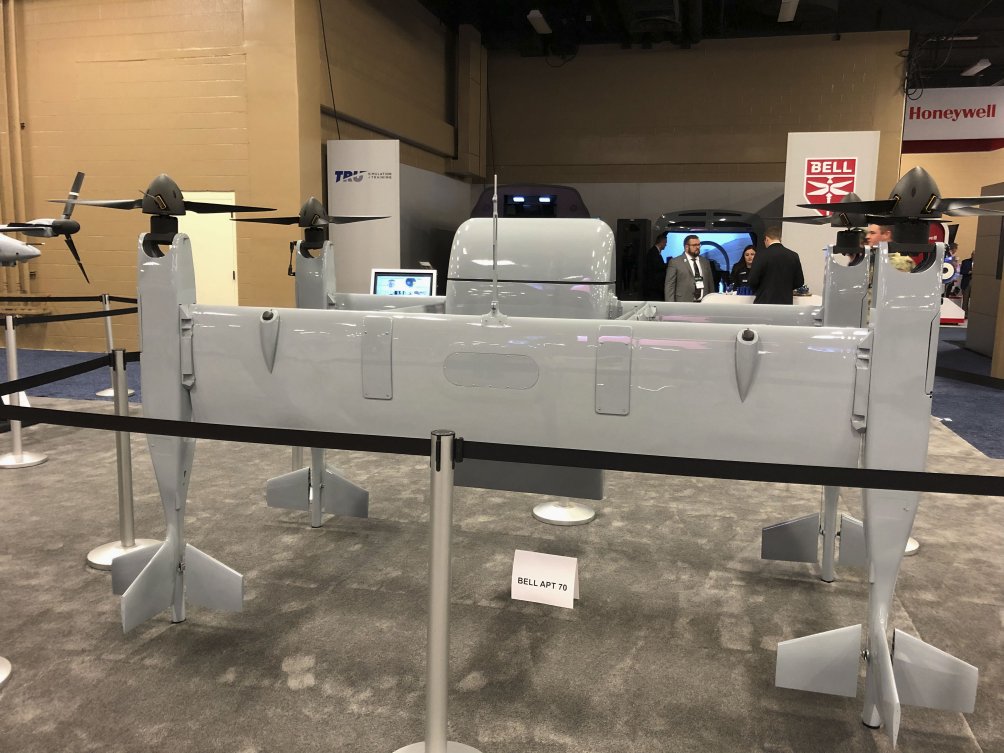
Bell has developed a pair of Autonomous Pod Transport (APT) scalable modular unmanned vertical take-off and landing (VTOL) aircraft capable of transporting payloads such as medical equipment, ammo, and water, among others.
Todd Worden, Bell senior manager for advanced tiltrotor systems, told Jane’s on 16 April that these two tail-sitting aerial resupply systems aircraft are called APT 20, for 20 lb (9 kg) payloads, and the larger APT 70, for 70 lb payloads. As the aircraft is scalable, Bell has an eventual goal of carrying a 1,000 lb payload with APT.
APT uses VTOL then transforms into wing-borne flight, flying nearly hoizontally, on its bi-wing design, to provide more efficient flight than by flying on the rotor system. The aircraft is powered by an electric/hybrid propulsion system.

Bell's APT family of aircraft features a bi-wing design that flies nearly horizontally. The APT 70, shown here at the 2019 AAAA Summit, can carry 70 lb of payload. (IHS Markit/Pat Host)
The APT aircraft are not tiltrotor, although they appear to be so on first glance. John Wittmaak, Bell programme manager for small and medium APT, told Jane’s that the aircraft flies much like a multirotor, which uses differential thrust before leaning into horizontal flight. As it increases speed, the APT’s wing becomes more effective, lifting the aircraft up and allowing the rotors to be used for thrust. Wittmaak said the faster the aircraft flies, the higher it can lift.
Looking to read the full article?
Gain unlimited access to Janes news and more...




